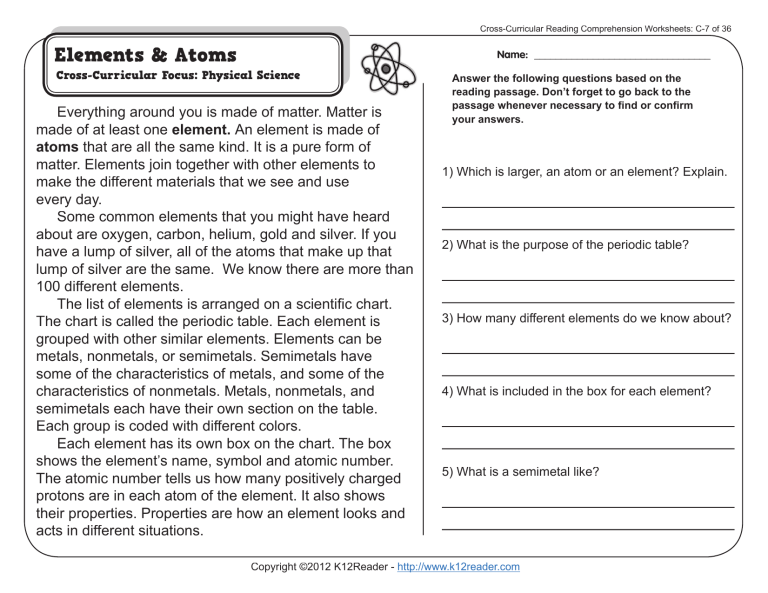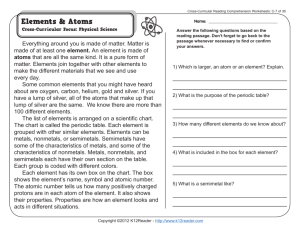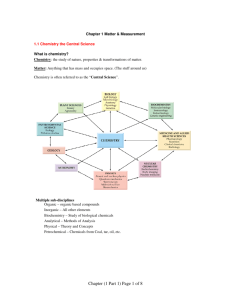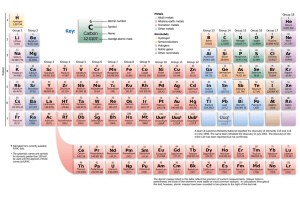
Cross-Curricular Reading Comprehension Worksheets: C-7 of 36 Everything around you is made of matter. Matter is made of at least one element. An element is made of atoms that are all the same kind. It is a pure form of matter. Elements join together with other elements to make the different materials that we see and use every day. Some common elements that you might have heard about are oxygen, carbon, helium, gold and silver. If you have a lump of silver, all of the atoms that make up that lump of silver are the same. We know there are more than 100 different elements. The list of elements is arranged on a scientific chart. The chart is called the periodic table. Each element is grouped with other similar elements. Elements can be metals, nonmetals, or semimetals. Semimetals have some of the characteristics of metals, and some of the characteristics of nonmetals. Metals, nonmetals, and semimetals each have their own section on the table. Each group is coded with different colors. Each element has its own box on the chart. The box shows the element’s name, symbol and atomic number. The atomic number tells us how many positively charged protons are in each atom of the element. It also shows their properties. Properties are how an element looks and acts in different situations. Answer the following questions based on the reading passage. Don’t forget to go back to the passage whenever necessary to find or confirm your answers. 1) Which is larger, an atom or an element? Explain. 2) What is the purpose of the periodic table? 3) How many different elements do we know about? 4) What is included in the box for each element? 5) What is a semimetal like? Copyright ©2012 K12Reader - http://www.k12reader.com Cross-Curricular Reading Comprehension Worksheets: C-7 of 36 Key Everything around you is made of matter. Matter is made of at least one element. An element is made of atoms that are all the same kind. It is a pure form of matter. Elements join together with other elements to make the different materials that we see and use every day. Some common elements that you might have heard about are oxygen, carbon, helium, gold and silver. If you have a lump of silver, all of the atoms that make up that lump of silver are the same. We know there are more than 100 different elements. The list of elements is arranged on a scientific chart. The chart is called the periodic table. Each element is grouped with other similar elements. Elements can be metals, nonmetals, or semimetals. Semimetals have some of the characteristics of metals, and some of the characteristics of nonmetals. Metals, nonmetals, and semimetals each have their own section on the table. Each group is coded with different colors. Each element has its own box on the chart. The box shows the element’s name, symbol and atomic number. The atomic number tells us how many positively charged protons are in each atom of the element. It also shows their properties. Properties are how an element looks and acts in different situations. Answer the following questions based on the reading passage. Don’t forget to go back to the passage whenever necessary to find or confirm your answers. Actual wording of answers may vary. 1) Which is larger, an atom or an element? Explain. An element is larger because it is made up of atoms. 2) What is the purpose of the periodic table? to list the elements 3) How many different elements do we know about? over 100 4) What is included in the box for each element? its name, symbol and atomic number 5) What is a semimetal like? It has characteristics of both metals and nonmetals. Copyright ©2012 K12Reader - http://www.k12reader.com



